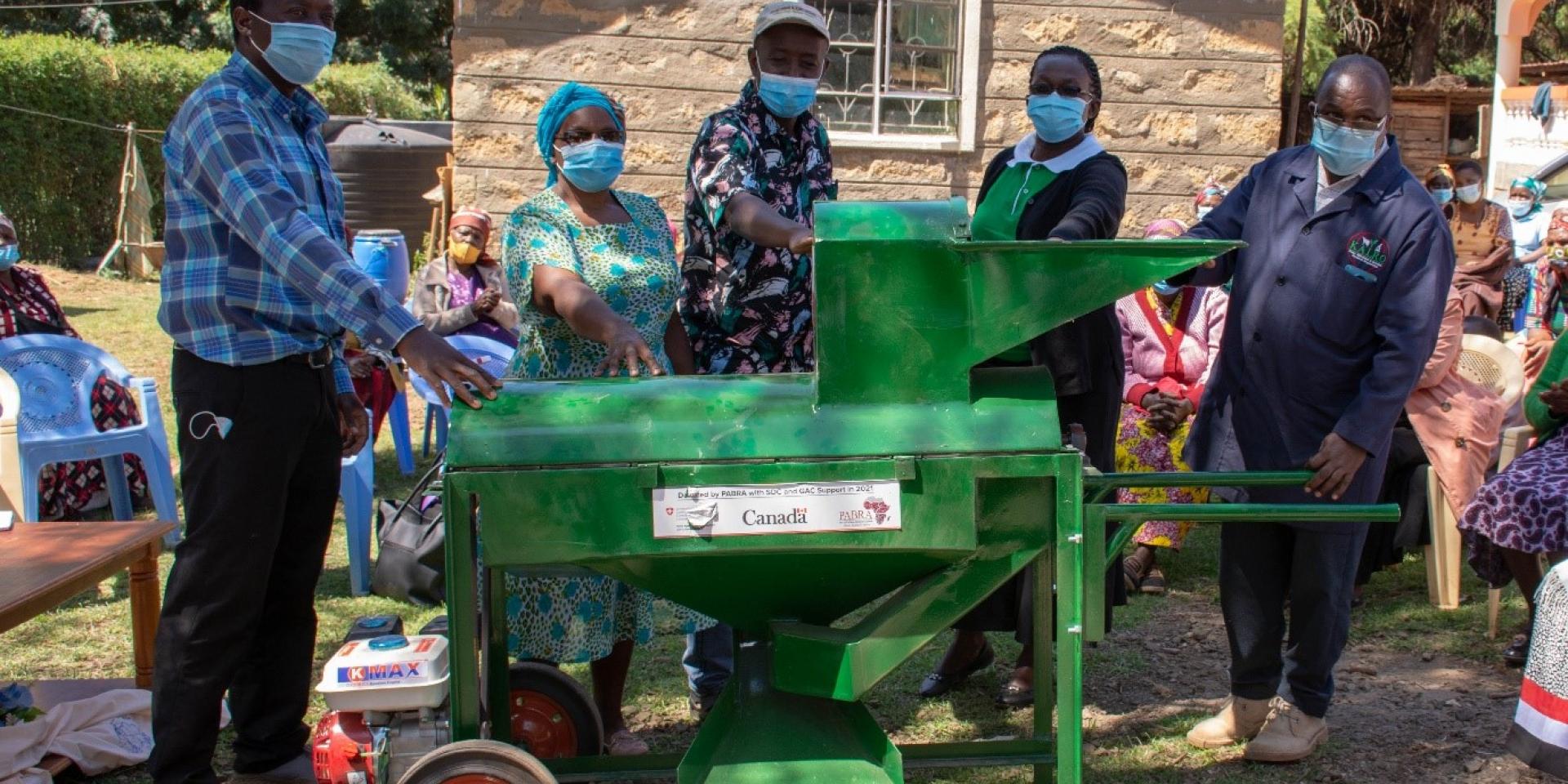Bean threshers transforming post-harvest and food safety handling in Kenya
 Photo: PABRA.
Photo: PABRA.
Women farmers in Kenya no longer have to go through the tedious ritual of hitting the bean harvest using sticks to put food on their family’s table.
“My hands are hard and blistered because I have to use this stick to thresh the beans after harvesting. It takes too long to finish the work, and I do not have sufficient energy to do it at my age”, said Jane Chepkwony, a farmer from Gorgor, Bomet County looking at the pile of beans harvested from the three-acre piece of land waiting to be threshed.
This is the dilemma thousands of bean farmers, especially women and youth, face every harvest season. Without mechanization, the farmer has to rely on family labor or expensive hired labor to thresh beans.
Bean is an important crop contributing to food and nutrition security, incomes for thousands of smallholder farmers especially women, observes David Karanja, the National Bean Program Coordinator. KALRO has developed bean varieties rich in Iron and Zinc, which, if consumed, will reduce malnutrition, mainly anaemia, stunting, and reduced immunity. Our research and development work aims to encourage the wider production and consumption of these beans. But high labor costs especially at harvesting could stand in the way of achieving the goal of putting nutritious foods on the table.
‘’It takes days to thresh piles of beans and winnow them to separate the chaff from the grain. Losses are high due to the scattering of the beans especially during transportation from the farm before threshing. Coincidentally, this is when the farmer is at the lowest financial position, having spent the most money during production.’’ said Dr. Boaz Waswa, a researcher at the Alliance of Bioversity International and CIAT (Alliance).
Luckily, the above predicament is about to change for the better. With the introduction of the Multi Crop Thresher (MCT) in Kenya by the Pan Africa Bean Research Alliance (PABRA). The intervention is part of the innovations introduced by PABRA to reduce drudgery, minimize post-harvest grain loss and contamination of the beans grain, and create job opportunities, especially for women and youth who provide threshing services along the bean value chain.